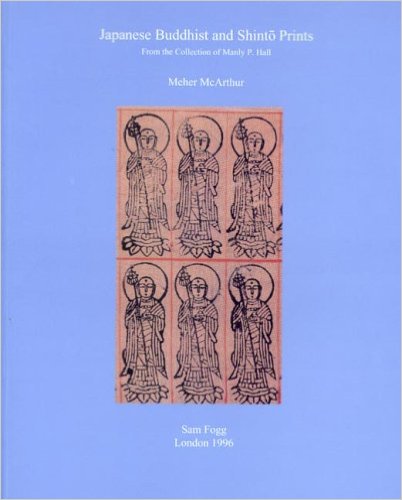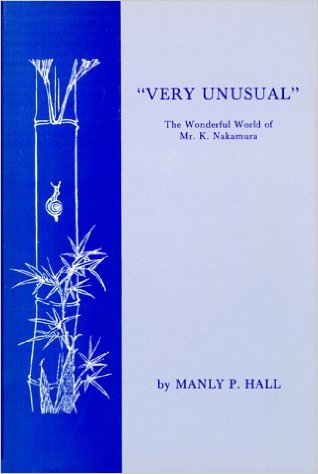It was the summer of 1995. I had just finished my Masters at London University’s School of Oriental and African Studies (SOAS) majoring in Japanese art. I had invested the last two years of my life and all of my savings studying Asian art. I loved what I’d been studying and was determined to make this career choice work. However, at that time there were probably literally 10 full-time positions in the whole of the UK in the Asian art field, and they were taken. The Japanese economy had crashed a couple of years before, followed by its art market, so this made my area of specialty particularly troublesome. Soon after I completed my studies, I understood it was going to take a miracle for me to become an Asian art historian. Sam was my miracle.
Sam had been an art dealer for some time when I first met him. He was well known and respected internationally as a specialist in Medieval art, mostly Christian manuscripts and artifacts, and had an elegant gallery near Piccadilly in London. He had called one of the professors at SOAS because he had recently acquired a collection of Buddhist manuscripts, prints and other material from the Philosophical Research Society, an educational organization founded by Manly P. Hall in Los Angeles. He was looking for a graduate who could catalog a collection of Japanese Buddhist prints that was part of it. I had been interested in Japanese Buddhist art as a student, and the professor had very kindly recommended me to Sam. When I met him and saw the prints, I had trouble controlling my excitement over the material – piles of printed images of Buddhist deities, many souvenirs from the country’s temples that were part of Buddhist pilgrimage routes that the Japanese had traveled for centuries. Very little research had been done on the material, but I didn’t care. It all looked intriguing to me.
I also immediately liked Sam. Though he was a big player in London’s art gallery world, I found him energetic, fun, warm and encouraging. He clearly had a passion for art and was brave enough to take on material that was new and unfamiliar to him. He hired me to research the prints for a catalog he hoped to publish on them, and I spent the next three months or so in heaven, being paid to research something fascinating and write about it for publication. When I was working at his gallery, though Sam was always busy with clients, managing new acquisitions, or working with his staff, he was generous with his time and knowledge, checking in with me on my work, coaching me with my writing style so that it matched his other catalogs. When the catalog was published a few months later, I was over the moon. I’d been paid to do research and now I had a publication! But I was also sad that my project for Sam was finished. He kept me on part time to work on a few other projects and even offered me a commission if I could help sell some of his Asian material. I managed to sell some Japanese paintings to one private client, and perhaps because of this sale – but more likely because Sam was such a caring and inspiring mentor – I worked up the confidence to convince the director of a museum in Pasadena, California to purchase a collection of Japanese folk paintings from Sam – right after he had finished interviewing me for the job as curator at the museum! I don’t think I’ve ever had that much professional pluck again. I am sure I have Sam to credit for that.

Shortly after that interview, which had happened because the museum director had seen the catalog of Buddhist prints I’d written for Sam, I moved to the United States to work at the museum – Pacific Asia Museum in Pasadena. This was a hugely exciting move for me, both professionally and personally, but leaving my family, friends and a boss like Sam was hard. Fortunately, our relationship continued for after I moved, but it blossomed into a friendship. Sam has visited Los Angeles several times, including once for our wedding, and David and I have visited him in London on several occasions over the years. Because he has a son called Theo too, he was thrilled to meet our little Theo when he was just 9 months old, laughingly comparing our chubby little boy with England football player Wayne Rooney! On Sam’s first visit to Southern California shortly after I moved here, we decided not to visit museums but go to the beach instead. To celebrate my new life in sunny LA, Sam bought me my first toe ring, which I still wear today and may never take off – as a reminder that no matter how hard I have found my career as an Asian art historian sometimes, someone as amazing as Sam believes in me!

Today I sent Sam a book that I thought he might find interesting. The book, Very Unusual: The Wonderful World of Mr. K. Nakamura, was written in the late 1970s by Manly P. Hall, the founder of the Philosophical Research Society, from whom Sam acquired all the Asian material 20 years ago. Hall has since passed away, and the PRS has now become the University of Philosophical Research and is less than a mile away from our home. Hall was a lover of all things philosophical and mystical, and this book is a collection of tales about a fictional art and antiques dealer in Kyoto who is very knowledgeable about the legends and lore of Japan. Many of the stories are set in Mr. Nakamura’s antique shop, and are a blend of the commonplace and the magical. Though the work is fictional, I know from my own experience working for Sam that antique shops and galleries can indeed be the setting for magical, life-changing moments.
Loved this one. Mentorship is so valuable!
LikeLike